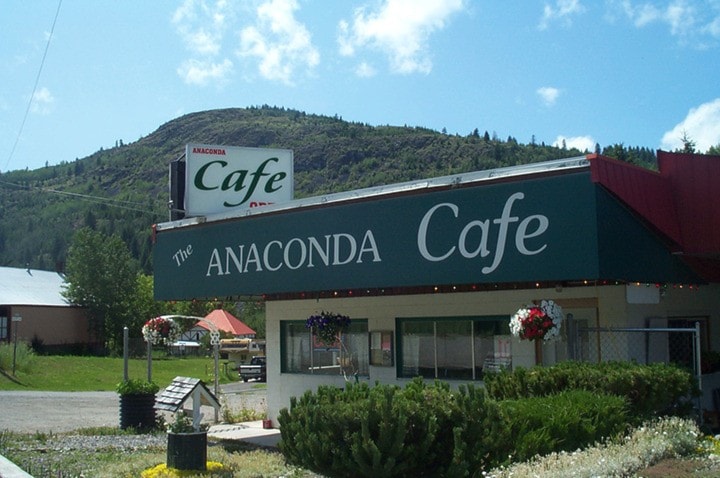Fourth in a series on West Kootenay-Boundary place names
There are snakes in the Boundary, but that’s not how the Greenwood suburb of Anaconda got its name.
Former Greenwood mayor Neil Zahnd wrote in the 1988 Boundary Historical Society report: “No record remains to tell us how they chose the name, but oral tradition is that it was named after the giant Anaconda mine in Montana.” (Anaconda, Montana was home to a large copper smelter and today has a population of about 9,300.)
It appears the name was first applied to a local mine before being given to the town, judging from the earliest reference in the Midway Advance in December 1895: “The development work on the Anaconda is proving the property to be valuable ...”
The same newspaper reported in April 1896: “Greenwood City and Anaconda are booming. New buildings are being built daily. New comers are arriving every week, and several families are camping near the town in tents ...”
In October of the latter year, Ewing Keithley, Frederic Keffer and Lewis Hind incorporated the Anaconda Townsite Co. Charles de Blais Green surveyed the townsite along Boundary Creek at the mouths of Lind and Copper. The streets were named for English authors — Shakespeare, Shelly, Byron, and Milton — while the avenues were named after American smelting centres: Everett, Butte, Denver, Omaha, and Tacoma. The latter names  survive while the former do not.
survive while the former do not.
Anaconda had four hotels, two general stores, a bakery, shoemaker, assay office, sawmill, lawyer, and newspaper, the Anaconda News. Founded in late 1900, and published by Fred Keffer’s young son Robert, it was more of a mimeographed newsletter at first and its pages only measured 5.5 by 8.5 inches. It folded in 1908. (1901-05 has been digitized and is available through UBC’s BC Historical Newspapers site.)
(Apparently it was Anaconda’s second paper — the Boundary Historical Society’s 1988 report quoted from the first edition of the Anaconda Standard, dated July 1, 1897, although it’s not clear where the original is nor how long it lasted.)
Greenwood quickly outgrew Anaconda, but while there were many overtures to amalgamate the two, it never happened. Anaconda, however, became home to the BC Copper Company smelter, which operated from 1901 to 1918. Portions of the townsite are now covered by the smelter’s slagpile. Leon Lotzkar bought the site for scrap and later donated the remains to the City of Greenwood as a park.
Although primarily a residential neighbourhood today, Anaconda is the site of an old West Kootenay Power substation that is now an alternative energy project.
Anaconda’s post office opened on November 1, 1896 and closed on July 30, 1915.
The name is perpetuated by the Anaconda Cafe.
Next week: Grow apples and grow rich in Appledale.
Previous installments in this series
